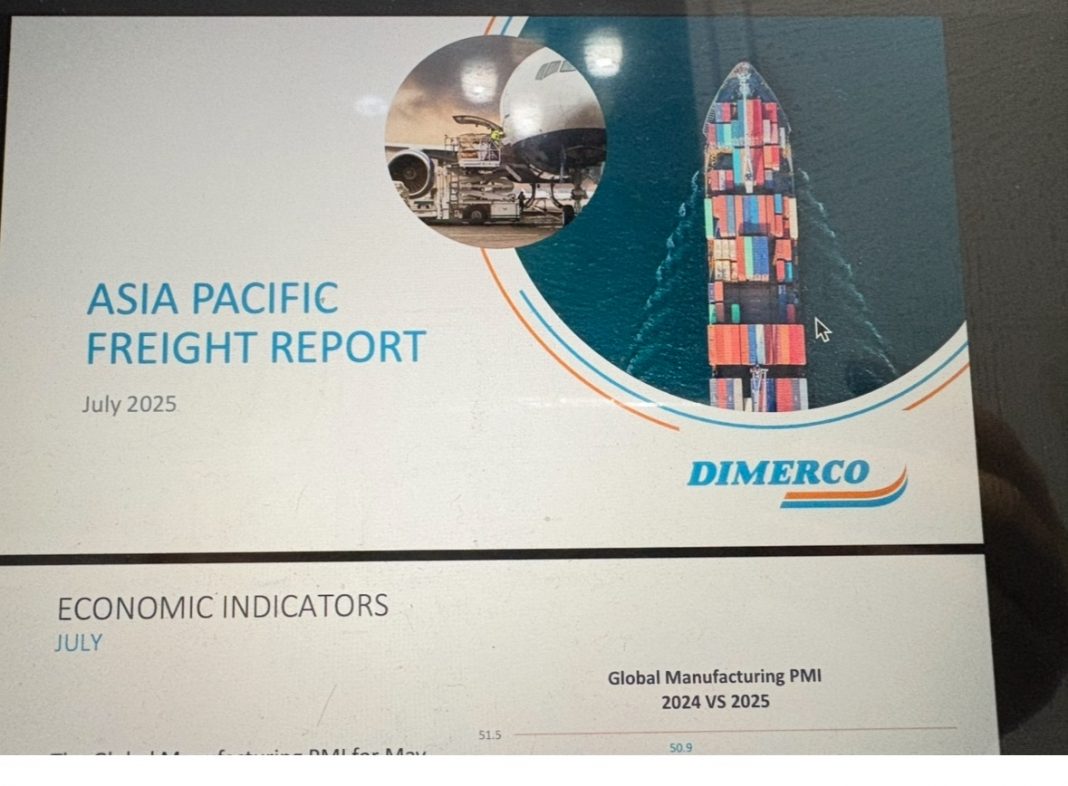Dimerco’s July 2025 freight market report has considered the Philippine political situation with the start of the Vice-President’s impeachment trial this month. Globally, the report indicates global supply chains face rising congestion, tariff uncertainty, and capacity shifts.
Dimerco Express Group’s July 2025 Asia-Pacific Freight Market Report reveals a dynamic and challenging freight environment, intensified by looming tariff expirations, persistent congestion, and rapidly evolving capacity constraints across global trade routes as the 90-day tariff pause ends on July 9, creating major uncertainty in demand forecasts.
Specifically for the Philippines’ air freight market, Dimerco stated “Political uncertainty may grow with the start of the Vice-President’s impeachment trial.” The report did not elaborate. It likewise noted that the ongoing Iran-Israel conflict has tightened space availability for some carriers, especially in the Middle East.
For ocean freight, the report said that freight capacity is expected to remain soft in the Philippines. However, possible equipment shortages can affect space availability. With the onset of peak season, both inbound and outbound shipment volumes are expected to increase. The report also considered the inclement weather in the country during the rainy season may lead to vessel delays.
Globally, Dimerco said that tariff deadlines are driving export surge. The impending expiration of the U.S.–China reciprocal tariff suspension on August 13 has sparked a rush in exports, notably from Taiwan, Vietnam, and Southern China, placing significant pressure on available air and ocean capacities.
General reciprocal tariffs will expire on July 8 this year where shipments should arrive and entries filed on or before the expiration date as the first landing port in the U.S. to ensure the 10 percent reciprocal tariff is applicable.
In addition, Section 301 Tariff Exclusions on Chinese goods have been extended until August 31, 2025.
Nonetheless, the report said that transpacific rates, after briefly softening in June, are stabilizing as shipping lines restore previously canceled sailings. Persistent port bottlenecks at Manzanillo, key European gateways, and select U.S. ports continue due to inland logistics congestion and labor shortages.
Following the easing of the US-China trade conflict in May 2025, TPEB (Trans-Pacific Eastbound) ocean freight rates surged by USD3,000 per 40 footer container as of June 1. To compete for market share, several carriers either deployed additional loaders to the USWC or reversed previously scheduled blank sailings. This led to an oversupply of capacity in the market, resulting in a sharp drop in spot rates.
Carriers are adjusting capacity levels on the U.S. routes, and rates are expected to remain stable or slightly decline in July. On the routes to Europe, the rate is increasing driven by reduced sailings, ongoing port congestion, and severe backhaul delays.
On the other hand, Intra-Asia rates remain mostly stable with minimal fluctuations. Intra-Asia airfreight remains robust, especially between China and Southeast Asia, while China–U.S. routes face reduced volumes due to declining eCommerce shipments. In contrast, U.S. outbound airfreight from Dallas and Los Angeles tightens amid back-to-school and early holiday preparations.
Geopolitics, particularly the U.S. military actions near Iran have disrupted Persian Gulf shipping routes, causing significant rerouting.
Additionally, heightened India-Pakistan trade tensions have forced carriers to restructure services, complicating South Asia–Middle East routes.
Meantime, Taiwan experiences heightened demand for freight capacity as businesses expedite shipments of AI hardware and electronic components in anticipation of potential tariff impacts.




